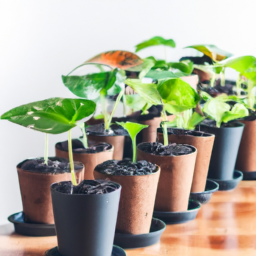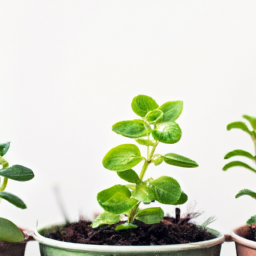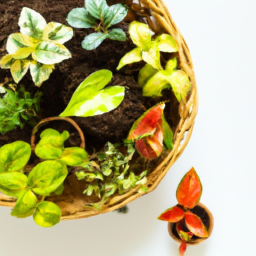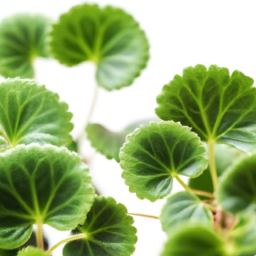
Hey there, plant enthusiasts! Have you ever heard of plant swaps? If not, you’re in for a treat. In this blog post, we’ll be diving into the wonderful world of plant swaps and how they are not only a great way to expand your plant collection but also a fantastic opportunity to build a thriving community through green exchanges. So, whether you’re a seasoned plant parent or just starting your green journey, get ready to learn all about the magic of plant swaps and how they can bring people together in a shared love for all things botanical. Let’s jump right in!
The Benefits of Plant Swaps in Building a Green Community
Introduction
Welcome to the world of plant swaps, where green enthusiasts come together to exchange plants and build a thriving community. Plant swaps have gained popularity in recent years as people seek to connect with nature, share their love for plants, and foster a sense of community. In this article, we will delve into the numerous benefits of plant swaps and how they contribute to building a green community.
Creating a Sense of Community
Plant swaps provide a unique opportunity for individuals to come together and share their passion for plants. These events bring together people from different backgrounds, age groups, and expertise levels, creating a diverse and inclusive community. Whether you are a seasoned gardener or a beginner, plant swaps offer a welcoming space where everyone can connect and learn from one another.
By participating in plant swaps, individuals can forge new friendships and strengthen existing ones. The shared interest in plants creates a common ground for conversations and fosters a sense of belonging. This sense of community extends beyond the event itself, as participants often stay connected through online platforms, sharing advice, tips, and even swapping plants outside of organized events.
Plant swaps also provide an opportunity for individuals to give back to their community. Many plant swaps organize charity events, where participants can donate plants or a portion of the proceeds to local environmental initiatives. This collective effort not only strengthens the bond within the plant swap community but also contributes to the overall well-being of the wider community.
Enriching Plant Collections
One of the primary benefits of plant swaps is the opportunity to diversify and expand your plant collection. Whether you are a plant enthusiast looking to add rare specimens to your collection or a beginner seeking to start your green journey, plant swaps offer a wide variety of plants to choose from.
Unlike traditional plant shopping, plant swaps often provide access to unique and hard-to-find plants that are not readily available in nurseries or garden centers. This allows participants to discover new plant species, explore different varieties, and expand their knowledge of plants. The diversity of plants available at plant swaps ensures that every participant can find something that piques their interest and suits their individual preferences.
Furthermore, plant swaps encourage sustainable gardening practices by promoting the propagation and exchange of plants. Instead of purchasing new plants, participants can swap cuttings, divisions, or even seeds. This not only reduces the demand for commercially produced plants but also promotes resourcefulness and self-sufficiency among the community members.
Educational Opportunities
Plant swaps offer a wealth of educational opportunities for individuals of all skill levels. Whether you are a seasoned gardener or a novice plant parent, you can learn valuable insights and techniques from fellow participants.
During plant swaps, experienced gardeners often share their knowledge and expertise through informal discussions, workshops, or demonstrations. They provide guidance on plant care, propagation methods, pest control, and other essential aspects of gardening. This exchange of knowledge empowers participants to become more confident and knowledgeable gardeners.
Moreover, plant swaps serve as a platform for plant enthusiasts to learn about new plant species, their specific requirements, and how to incorporate them into their existing gardens. Participants can ask questions, seek advice, and gain inspiration from others, fostering a continuous learning environment.
Conclusion
Plant swaps play a vital role in building a green community by creating a sense of belonging, enriching plant collections, and offering educational opportunities. These events bring together individuals who share a common love for plants, fostering connections and friendships that extend beyond the swap itself. By participating in plant swaps, individuals not only enhance their own gardening experiences but also contribute to the overall well-being of their community. So, why not join a plant swap near you and embark on a journey of growth, connection, and community building?

How to Organize a Successful Plant Swap Event for Community Engagement
Introduction
Organizing a plant swap event is a fantastic way to bring together plant enthusiasts in your community and foster a sense of belonging and connection. Not only does it provide an opportunity for people to exchange plants, but it also promotes sustainable gardening practices and encourages the growth of green spaces. In this guide, we will walk you through the step-by-step process of organizing a successful plant swap event that will engage your community and create lasting connections.
Step 1: Planning and Preparation
The first step in organizing a plant swap event is to plan and prepare. Start by determining the purpose and goals of the event. Are you aiming to promote sustainable gardening, educate participants about different plant species, or simply bring people together? Once you have a clear objective in mind, you can move on to the logistics.
Choosing a Venue
Selecting the right venue is crucial for the success of your plant swap event. Look for a location that is easily accessible and has enough space to accommodate participants and their plants. Consider local community centers, parks, or even private gardens. Make sure to obtain any necessary permits or permissions well in advance.
Setting a Date and Time
Choose a date and time that works best for your target audience. Consider factors such as weather conditions, availability of participants, and any local events that may clash with your plant swap. Weekends are often a popular choice, as they allow more people to attend without conflicting with work schedules.
Promoting the Event
Spread the word about your plant swap event to ensure maximum participation. Utilize social media platforms, community bulletin boards, local newspapers, and gardening forums to advertise the event. Create eye-catching posters or flyers with all the necessary details, including the date, time, venue, and any specific guidelines for participants.
Step 2: Establishing Guidelines
To ensure a smooth and organized plant swap event, it is essential to establish clear guidelines for participants. These guidelines will help maintain fairness, safety, and overall satisfaction among attendees.
Plant Quality and Quantity
Specify the quality and quantity of plants participants can bring to the swap. Encourage them to bring healthy, pest-free plants that are well-rooted and suitable for propagation. Consider limiting the number of plants each person can bring to avoid overwhelming the event with excessive offerings.
Labeling and Information
Ask participants to label their plants with important information, such as the plant’s name, care instructions, and any special considerations. This will help others make informed choices and ensure the plants find suitable new homes.
Swapping Process
Decide on the swapping process that suits your event best. You can opt for a one-to-one exchange, where participants directly trade plants with each other, or a more organized system where participants receive tokens or tickets for their plants and can then use them to select new ones. Whichever method you choose, ensure fairness and transparency throughout the process.
Step 3: Event Execution
On the day of the plant swap event, it’s crucial to have a well-organized execution plan to ensure everything runs smoothly.
Registration and Check-In
Set up a registration and check-in area where participants can sign in, receive their event materials, and get any additional information. This will help you keep track of attendance and manage the flow of participants effectively.
Layout and Display
Arrange the venue in a way that allows participants to easily browse and select plants. Use tables, crates, or even blankets to create designated areas for different plant categories. Consider labeling each area to help participants navigate and find the plants they are interested in.
Engagement Activities
Enhance the overall experience of your plant swap event by organizing engaging activities. You can invite guest speakers to give informative talks on gardening topics, offer mini-workshops on plant care, or even host a plant-themed quiz or raffle. These activities will not only educate participants but also provide opportunities for networking and building connections.
Conclusion
Organizing a successful plant swap event requires careful planning, clear guidelines, and effective execution. By following the steps outlined in this guide, you can create a community-engaging event that promotes sustainable gardening practices, fosters connections among plant enthusiasts, and leaves a lasting impact on your community. So, gather your green-thumbed neighbors, get those plants ready, and embark on a journey of building a greener and more connected community through plant swaps.

Creating a Thriving Plant Exchange Network for Sustainable Living
Introduction
Plant swaps have gained popularity in recent years as a way for plant enthusiasts to connect, share, and expand their collections. These green exchanges not only provide an opportunity to acquire new plants but also foster a sense of community and promote sustainable living. In this article, we will explore the steps to create a thriving plant exchange network that brings people together and contributes to a greener future.
Step 1: Identify the Purpose and Goals
The first step in building a successful plant exchange network is to clearly define its purpose and goals. Are you aiming to promote biodiversity, educate people about plants, or simply create a platform for plant enthusiasts to connect? Understanding the objectives will help shape the structure and activities of the network.
Consider conducting surveys or hosting community meetings to gather input from potential participants. This will ensure that the network aligns with their interests and needs. By involving the community from the beginning, you can create a sense of ownership and increase engagement.
Once you have a clear purpose and goals, it’s time to move on to the next step.
Step 2: Establish a Platform
To facilitate plant exchanges and community interactions, it’s essential to establish a platform that brings everyone together. This can be a website, a social media group, or even a dedicated app. The platform should be user-friendly, accessible, and allow participants to easily share information about their plants.
Consider including features such as plant profiles, where participants can showcase their plants and provide details about their care. Enable discussions and forums where members can ask questions, share tips, and arrange plant swaps. The platform should also allow for easy communication and coordination among participants.
Remember to promote the platform through various channels, such as social media, local gardening clubs, and community newsletters. The more people join, the more vibrant and diverse the plant exchange network will become.
Step 3: Organize Events and Activities
One of the key aspects of a thriving plant exchange network is organizing regular events and activities. These can range from physical meet-ups to virtual workshops and webinars. The goal is to provide opportunities for participants to connect, learn, and exchange plants.
Consider hosting plant swap events where participants can bring their extra plants and trade them with others. This not only helps diversify plant collections but also promotes sustainability by reducing waste. Additionally, organize educational workshops where experts can share their knowledge about plant care, propagation techniques, and sustainable gardening practices.
Collaborate with local nurseries, botanical gardens, and gardening clubs to host joint events or invite guest speakers. This will not only attract more participants but also create valuable partnerships within the community.
Conclusion
Building a thriving plant exchange network requires careful planning, community involvement, and a commitment to sustainable living. By clearly defining the purpose and goals, establishing a user-friendly platform, and organizing regular events, you can create a vibrant community of plant enthusiasts who are passionate about sharing, learning, and contributing to a greener future.
Remember, the success of the network relies on the active participation and engagement of its members. Encourage collaboration, knowledge sharing, and a sense of belonging to foster a strong and sustainable plant exchange network.
Let’s wrap up what we learned
Plant swaps are becoming increasingly popular as a way to build community and foster a love for greenery. These events bring together plant enthusiasts of all levels, creating a space where people can exchange their beloved plants and knowledge. Whether you’re a seasoned gardener or a newbie looking to grow your plant collection, plant swaps offer a unique opportunity to connect with like-minded individuals and learn from each other’s experiences.
The concept is simple: participants bring a plant (or multiple plants) to the swap and trade them with others. It’s not just about acquiring new green friends, but also about sharing stories, tips, and tricks with fellow plant lovers. The variety of plants available at these events is astounding, ranging from common houseplants to rare and exotic species. You might find yourself going home with a beautiful fern or a unique succulent you’ve never seen before. Plus, it’s a sustainable way to expand your collection without spending a fortune or contributing to the demand for new plants. So, if you’re looking to connect with nature-loving individuals and add some greenery to your space, attending a plant swap might just be the perfect way to do it.
Top FAQs:
Q1: What is a plant swap?
A1: A plant swap is a community event where plant enthusiasts gather to exchange or trade plants with one another. It’s a fantastic way to diversify your plant collection, discover new species, and connect with fellow green thumbs.
Q2: How do plant swaps build community?
A2: Plant swaps foster a sense of community by bringing together people who share a common interest in plants. They provide a platform for individuals to connect, share knowledge, and form friendships. By participating in plant swaps, you not only expand your plant collection but also become part of a supportive and inclusive gardening community.
Q3: How can I participate in a plant swap?
A3: Participating in a plant swap is easy! Keep an eye out for local plant swap events or join online plant swap groups. Attend the event or join the group, and bring along any plants you wish to trade. Be prepared to engage in friendly conversations, share your plant expertise, and be open to receiving new plants in return.
Q4: What are the benefits of participating in plant swaps?
A4: Participating in plant swaps offers several benefits. Firstly, it allows you to diversify your plant collection without spending a fortune. You can acquire new plant varieties without purchasing them from a nursery. Secondly, plant swaps provide an opportunity to learn from experienced gardeners and gain valuable insights into plant care and propagation techniques. Lastly, plant swaps create a sense of belonging and camaraderie among plant enthusiasts, fostering a supportive and vibrant community.
Q5: What should I bring to a plant swap?
A5: When attending a plant swap, it’s a good idea to bring a few items. Firstly, bring any plants you wish to trade or give away. Ensure they are healthy, well-rooted, and properly labeled. Additionally, consider bringing some gardening tools such as small pots, potting soil, and plant labels in case you need to repot or divide plants on-site. Lastly, bring an open mind, a friendly attitude, and a willingness to connect with fellow plant lovers!

Alex Turner is a sustainable gardening advocate and the founder of an acclaimed indoor gardening blog. With a focus on eco-friendly practices and urban sustainability, Alex combines his background in environmental studies with his love for plants to educate readers on mindful indoor gardening. His work highlights the importance of nurturing both plants and the planet.


